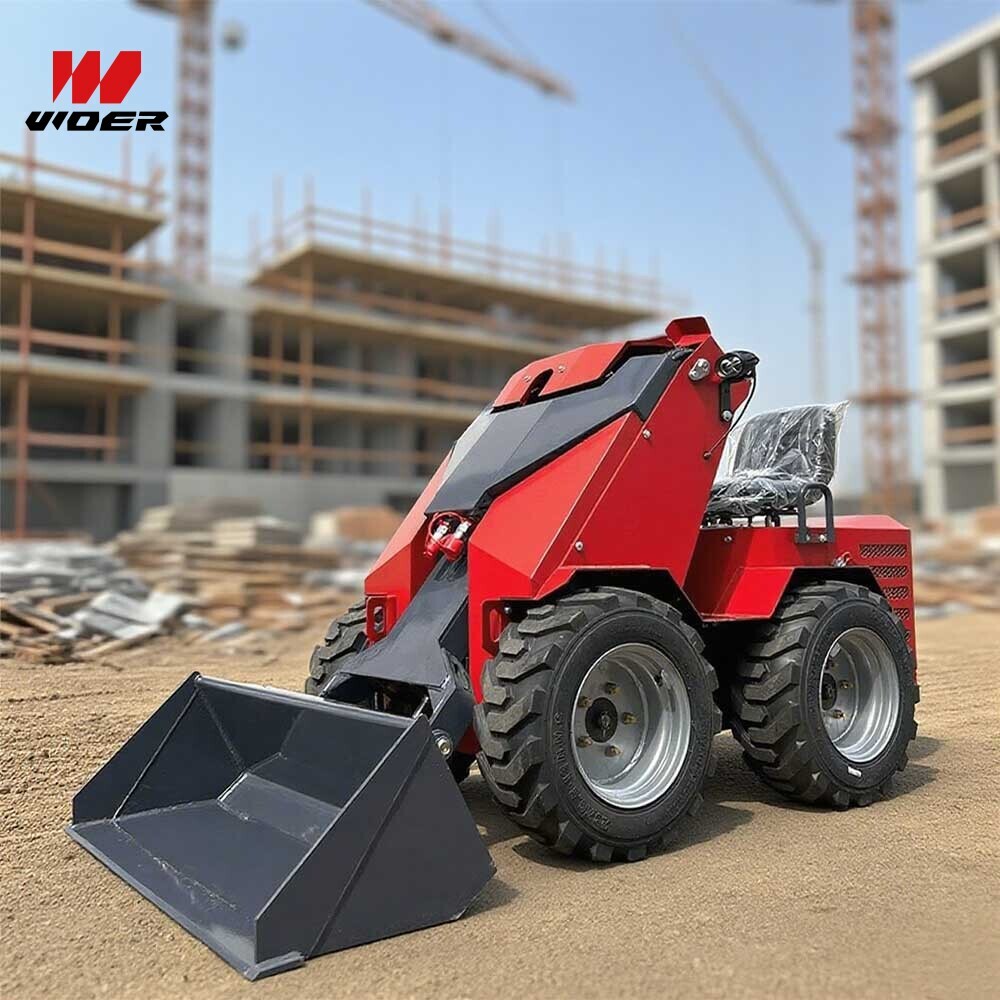Navigation
Contact us
Phone
Message

A stand on skid steer loader mini can dramatically increase jobsite agility and operator visibility compared with traditional compact loaders. This guide helps decision-makers, operators, and procurement teams evaluate whether a stand-on mini skid steer suits your workflow, safety standards, and budget.
What is a stand-on mini skid steer and where it fits
A stand-on skid steer loader mini is a compact, maneuverable loader designed for tight jobsite conditions where footprint, transportability and precise control matter. Unlike sit-on or cabbed skid steer loaders, the operator stands on a platform or rides a small standing station, enabling faster mounting and dismounting. Typical applications include timberyard tidying, landscaping near sensitive timber stockpiles, pallet handling in sawmills, and internal plant maintenance.
Key variants and naming you will encounter
In procurement documents you may see multiple designations: mini skid steer track loader skid steer loader, mini walk behind skid steer loader, skid steer loader crawler loader, mini steer skid loader and mini crawler skid loaders. Each emphasizes specific features—tracks vs wheels, walk-behind control vs stand-on platform, diesel vs gasoline power. Understanding these helps match machine to task.
Performance and technical considerations
When evaluating performance, consider rated operating capacity, breakout force, hydraulic flow, and track vs wheel traction. For wood-processing yards where surface conditions vary, track models—often termed mini skid steer diesel crawler loader—offer improved flotation and reduced ground disturbance. Conversely, wheeled mini steer skid loader models excel on paved plant floors and for trailer-to-trailer transfers.
EPA and emissions: track skid loader epa and compliance
Regulatory compliance matters for internal yards and export-import facilities. Many modern mini models are designed to meet local and international emissions standards—search for epa skid steer loader certifications or EU Stage equivalents when selecting diesel machines. Machine labels and manufacturer documentation should reference applicable EPA or regional compliance levels; non-compliant engines can cause costly operational restrictions.
Safety, ergonomics and operator productivity
Stand-on platforms improve visibility and reduce blind spots, but they also shift the operator's center of gravity—manufacturers mitigate this through safety interlocks, handrails, and dead-man switches. For timber operations where debris or slippery surfaces are common, opt for anti-slip platforms, enclosed foot guards, and easy-to-reach emergency stop controls. Training is crucial: a well-trained operator will extract far more productivity from a mini steer skid loader than an occasional user.
Cost analysis and ROI factors
Initial price is only part of the equation. Consider total cost of ownership: fuel type (gasoline vs diesel), maintenance intervals, track versus tire replacement costs, downtime for repairs, and attachment flexibility. For example, Cheap Mini Small Gasoline Loader For Sale may offer attractive upfront cost and fast lead time. However, evaluate fuel consumption and expected lifecycle in your specific wood processing use-case before committing.
Procurement checklist
- Confirm rated operating capacity with safety margin for intended loads.
- Verify EPA or regional emissions certification (track skid loader epa / epa skid steer loader where applicable).
- Assess attachment compatibility: forks, grapples, stump grinders, brush cutters.
- Factor in transport size and whether skid steer loader free shipping promotions apply.
- Request maintenance schedule, spare-parts availability, and warranty terms.
Use-case comparisons: stand-on vs walk-behind vs sit-on
Mini walk behind skid steer loader models prioritize control at very low speeds and are excellent for indoor or extremely constrained jobs. Sit-on cabbed loaders provide operator comfort and are better for long shifts or harsh environments. Stand-on models strike a middle ground: faster mounting, better visibility than sit-on units, and higher productivity than walk-behind units when material movement and frequent dismounts are required.
Maintenance, storage and transport
Routine maintenance is straightforward: daily greasing, hydraulic filter checks, and track tension inspections. For mini crawler skid loaders, track inspection is essential as track failure is one of the most time-consuming repairs. Store units on level surfaces, protect engines from prolonged moisture exposure, and for seasonal storage follow manufacturer-prescribed preservation steps.
Common pitfalls and how to avoid them
Underestimating lift capacity, ignoring attachment hydraulic requirements, and skipping operator training are frequent causes of operational problems. Another common mistake is buying the lowest-cost unit without verifying emissions compliance or total cost of ownership; this can lead to higher lifecycle costs and regulatory headaches.
Case snapshot: timber yard productivity uplift
A medium-sized timber processor switched two older walk-behind units to a pair of modern stand-on mini steer skid loaders. The result: 20% faster pallet handling, reduced operator fatigue, and fewer injuries from repetitive mounting/dismounting. Predictable maintenance schedules and on-site spares reduced downtime and improved throughput during peak season.
Specifications to request from suppliers
- Engine type, displacement, emissions rating (EPA, EU Stage).
- Rated operating capacity and tipping load data.
- Hydraulic flow, auxiliary circuits, and attachment compatibility.
- Track or tire specifications and replacement costs.
- Warranty, spare parts lead-times, and service network details.
Why choose a stand-on mini skid steer for wood-processing operations
For operations that value agility, frequent on/off usage, and superior visibility—especially in confined timber yards—a stand-on skid steer loader mini often yields the best balance of productivity and cost. If your operations include uneven ground or soft surfaces, consider a skid steer loader crawler loader or mini skid steer diesel crawler loader variant for better traction.
How we support buyers and end users
We provide specification guidance, comparative quotes, onsite demonstrations where feasible, and assistance verifying EPA conformity and safety options. Our procurement team can analyze total cost of ownership and recommend the best combination of equipment, attachments, and service plans to meet budget and operational KPIs.
If you are ready to evaluate options or request a quote, our inventory includes competitive models and occasional offers such as skid steer loader free shipping on select units. Contact us to arrange a specification review or site demo; our specialists will tailor recommendations to your timber-processing workflows.

This stunning beach house property is a true oasis, nestled in a serene coastal community with direct access to the beach.
Contact
West Street, Melbourne Victoria 3000 Australia